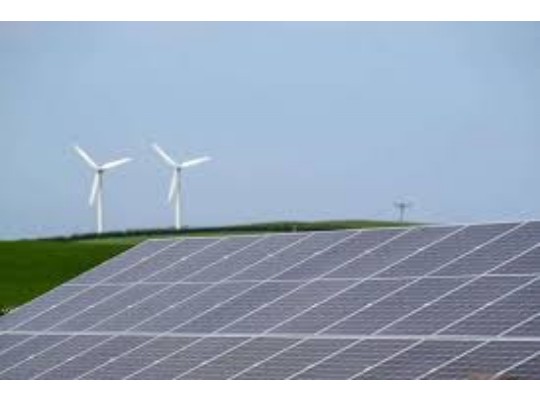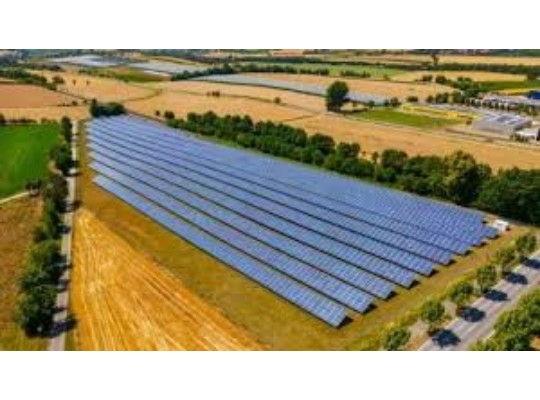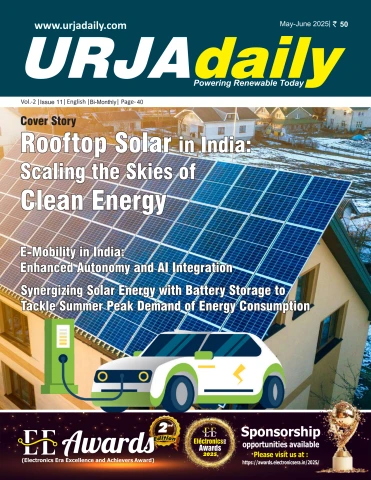Washington DC – A review by the SUN DAY Campaign of mid-year data just released by the Federal Energy Regulatory Commission (FERC) reveals that the mix of renewable energy sources (i.e., biomass, geothermal, hydropower, solar, wind) is now 30% of total U.S. electrical generating capacity. Moreover, June was the tenth month in a row in which solar was the largest source of new capacity putting it on track to become the nation’s second-largest source of capacity – behind only natural gas – within three years.
Renewables were 99% of new generating capacity in June and 91% in 1st half of 2024:
In its latest monthly “Energy Infrastructure Update” (with data through June 30, 2024), FERC says 37 “units” of solar totaling 2,192 megawatts (MW) were placed into service in June along with one unit of hydropower (34-MW). Combined they accounted for 98.9% of all new generating capacity added during the month. Natural gas and oil provided the balance: 20-MW and 5-MW respectively. [1]
During the first half of 2024, solar and wind added 13,072-MW and 2,129-MW respectively. Combined with 212-MW of hydropower and 3-MW of biomass, renewables were 91.2% of capacity added. The balance consisted of the 1,100 Vogtle-4 nuclear reactor in Georgia plus 369-MW of gas, 11-MW of oil, and 3-MW of “other.”
Solar was 97% of new capacity in June and 77% during the first six months of 2024:
The new solar capacity added from January through June this year was more than double the solar capacity (6,446-MW) added during the same period last year. Solar accounted for 77.4% of all new generation placed into service in the first half of 2024.
New wind capacity YTD accounted for most of the balance – 12.6% but that was slightly less than that added during the same time frame in 2023 (2,761-MW).
In June alone, solar comprised 97.4% of all new capacity added, followed by hydropower (1.5%).
Solar has now been the largest source of new generating capacity for ten months straight: September 2023 – June 2024. For seven of those ten months, wind took second place.
Over the past decade, solar capacity has grown more than ten-fold while wind capacity has doubled.
Between July 1, 2014 and June 30, 2024, installed utility-scale solar capacity grew from 9.25 gigawatts (GW) to 116.80-GW and expanded its share of total installed U.S. generating capacity more than ten-fold from 0.8% to 9.0%. Simultaneously, wind’s share more than doubled from 5.3% to 11.8%. The installed capacity of all renewables also doubled from 190.26-GW to 389.00-GW while their share of total capacity expanded from 16.3% to 30.0%.
The growth of solar capacity has been particularly pronounced. From a 0.8% share in June 2014, solar grew to 3.3% during the next five years (i.e., by June 2019) and then to 7.0% a year ago. Over the following half-year – i.e., by January 1, 2024, solar’s share had risen to 7.9% and now – a mere six months later – it stands at 9.0%.
Meanwhile, coal’s share of installed capacity fell from 28.4% in 2014 to 15.8% today and nuclear’s share has dropped from 9.2% to 8.0%. Natural gas’ share has hovered between 42% and 44% during the past decade.
Solar plus wind are now more than a fifth of U.S. generating capacity:
The combined capacities of just solar and wind now constitute more than one-fifth (20.7%) of the nation’s total available installed utility-scale generating capacity.
However, a third or more of U.S. solar capacity is in the form of small-scale (e.g., rooftop) systems that is not reflected in FERC’s data. Including that additional solar capacity would bring the share provided by solar + wind closer to a quarter of the nation’s total. [2]
Solar’s share of U.S. generating capacity advances it to fourth place:
The latest capacity additions have brought solar’s share of total available installed utility-scale (i.e., >1-MW) generating capacity up to 9.0%, further expanding its lead over hydropower (7.8%). Wind is currently at 11.8%. With the inclusion of biomass (1.1%) and geothermal (0.3%), renewables now claim a 30.0% share of total U.S. utility-scale generating capacity.
Installed utility-scale solar has now moved into fourth place – behind natural gas (43.3%), coal (15.8%) and wind – for its share of generating capacity after having recently surpassed that of nuclear power (8.0%).
Solar will soon become the second largest source of U.S. generating capacity:
FERC reports that net “high probability” additions of solar between July 2024 and June 2027 total 88,526-MW – an amount almost four times the forecast net “high probability” additions for wind (23,851-MW), the second fastest growing resource.
FERC also foresees growth for hydropower (1,240-MW), geothermal (400-MW), and biomass (90-MW). On the other hand, there is no new nuclear capacity in FERC’s three-year forecast while coal, natural gas, and oil are projected to contract by 20,542-MW, 3,106-MW, and 1,629-MW respectively.
If FERC’s current “high probability” additions materialize, by July 1, 2027, solar will account for more than one-seventh (14.8%) of the nation’s installed utility-scale generating capacity. That would be greater than either coal (13.3%) or wind (12.7%) and substantially more than either nuclear power (7.5%) or hydropower (7.4%). The installed capacity of utility-scale solar would thus rise to second place – behind only natural gas (40.3%).
Meanwhile, the mix of all renewables would account for 36.3% of total available installed utility-scale generating capacity – rapidly approaching that of natural gas – with solar and wind constituting more than three-quarters of the installed renewable energy capacity.
The combined capacities of all renewables, including small-scale solar, are on track to exceed natural gas within three years:
As noted, FERC’s data do not account for the capacity of small-scale solar systems. If that is factored in, within three years, total U.S. solar capacity (i.e., small-scale plus utility-scale) is likely to approach – and very possibly surpass – 300-GW. In turn, the mix of all renewables would then exceed 40% of total installed capacity while natural gas’ share would drop to about 37%.
Moreover, FERC reports that there may actually be as much as 212,673-MW of net new solar additions in the current three-year pipeline in addition to 72,387-MW of new wind, 8,303-MW of new hydropower, 509-MW of new geothermal, and 159-MW of new biomass. Thus, renewables’ share could be even greater by early summer 2027.
“With each passing month, renewables – led by solar – expand their contribution to the nation’s electrical capacity,” noted the SUN DAY Campaign’s executive director Ken Bossong. “Growing from just a fraction of one percent a decade ago, solar is now nearly a tenth of U.S. utility-scale generating capacity and poised to reach 15% within three years.”













